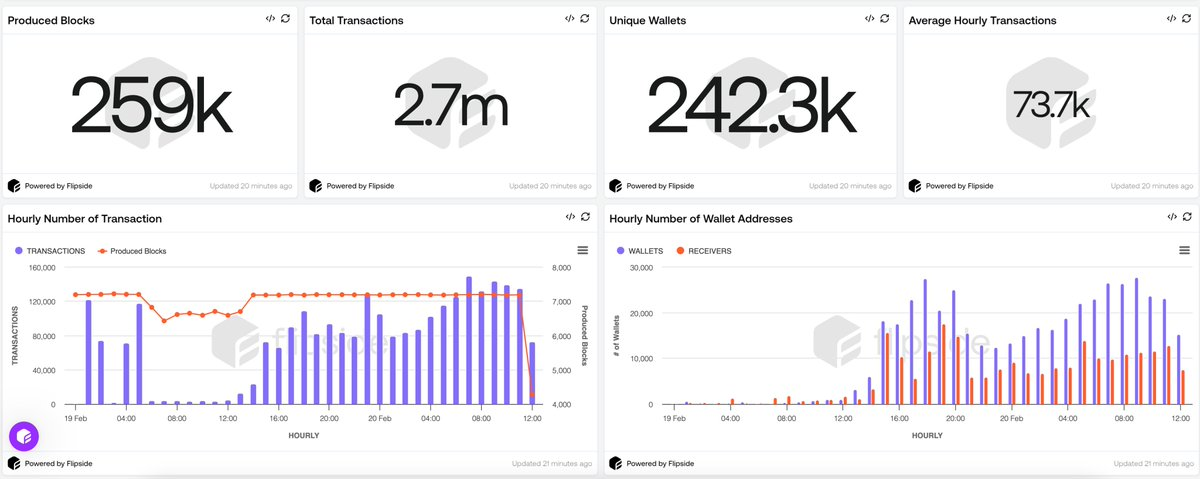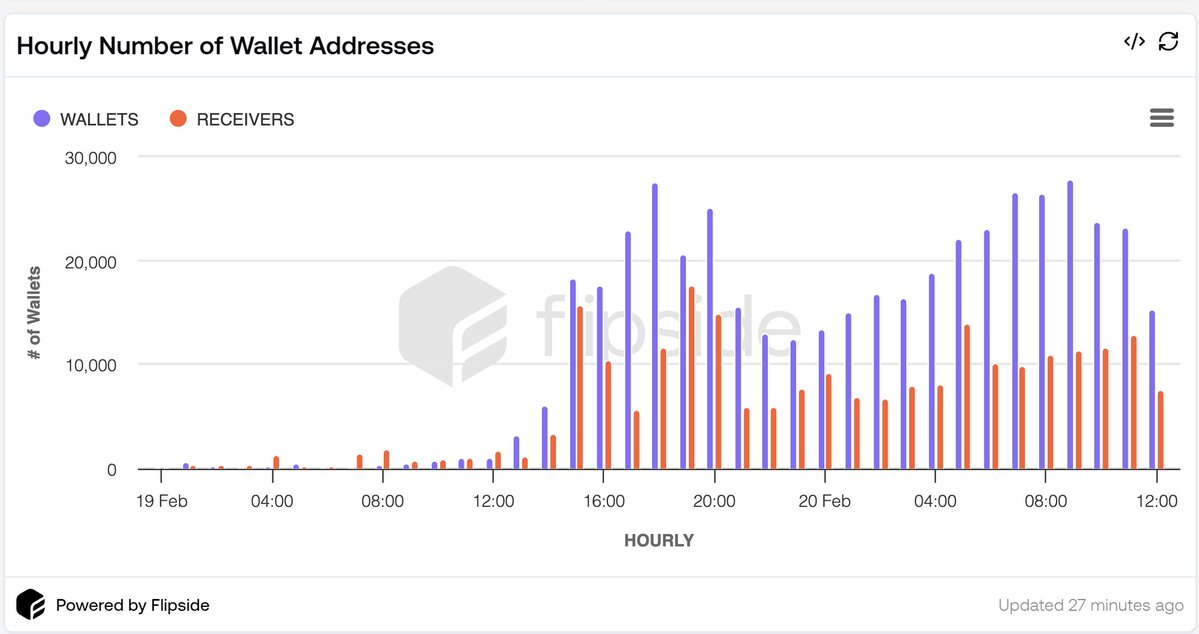Original author: Hess
Original translation: TechFlow
Monad’s testnet was officially launched on February 19th!

To date, the network has successfully processed nearly 2.7 million transactions, covering 242,300 independent addresses, with a transaction success rate of up to 98% and a block generation time of only 0.5 seconds.
In the first few hours after going live, Monad ran smoothly and reached a peak performance of 3,000 transactions per second (TPS).
Let’s take a closer look at this project!
Before you proceed, you can check out the details at this link .

According to Monads official data, they distributed testnet tokens to approximately 8.8 million active Ethereum addresses to attract more users to participate in testing and verify network performance.
In less than 24 hours, 3% of these addresses have completed their first transaction on the Monad Network.
This proportion is growing rapidly and is expected to reach 10% in a short time.

The large-scale distribution of testnet tokens also directly promoted a significant increase in TPS.
In just two hours after going live, Monads transactions per second (STPS) reached a peak average of 3,000.
Currently, Monads average STPS is 26, which better reflects the performance of the network in daily operation.

Monad’s success rate places it among the top in the blockchain space.
According to the testnet data, Monad’s transaction success rate is as high as 98%, which is an impressive performance.
Block time has been one of the areas that Monad focused on optimizing before going live.
Test data shows that Monads average block time is only 0.5 seconds, which makes it one of the fastest blockchains currently and is very suitable for high-frequency trading and real-time application scenarios.

Since the testnet launch, Monad has deployed nearly 110,300 smart contracts.
On average, 5,000-6,000 new contracts are added every hour, and the current number of active contracts is 500, showing the strong activity of the network.

Notably, approximately 77% of the addresses that completed their first transaction on Monad did not receive airdrops from other popular blockchains or platforms.
Among them, Arbitrum, Eigen and Layer 3 airdrop addresses accounted for the largest proportion.

According to the analysis of the first transaction data of addresses on the EVM chain, 67% of the addresses have been active for more than one year, while 8% of the addresses have been active for less than one month.

On which blockchains are Monad participants most active?
Data shows that in the past six months, Base, Polygon and Arbitrum have become the three most active blockchains for Monad participants. These three chains have attracted a large number of users attention and use due to their high performance, low transaction costs and rapidly developing ecosystems.










